Last-Minute NYC Holiday Gift Guide 🎁
We’ve created a holiday gift guide with presents for the intrepid New Yorker that should arrive just in time—


When most of us think of the street plan of Manhattan, the first thing that usually springs to mind is an organized grid system of intersecting horizontal and vertical lines. Stuyvesant Street, crossing East 9th Street between Second and Third Avenues, somewhat bucks this trend. Named after Peter Stuyvesant, the Dutch colonial governor, it is notable for being the one and only diagonal street in Manhattan north of 8th Street and south of Central Park, except for Broadway.
It begs the question; how did this relatively small street manage to flout the careful street gridiron planning imposed by the Commissioners’ Plan of 1811?
Stuyvesant himself held an almost mythical status in New York City. After he was sent here in 1647 by the Dutch West Company as governor of New Amsterdam, he is credited for converting the rather disordered landscape of the present-day Manhattan into a profitable port town.
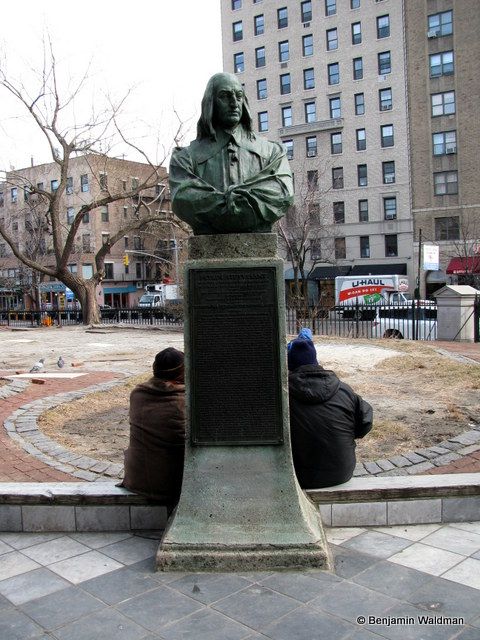
A bust of Stuyvesant in the churchyard of St. Mark’s-In-The-Bowery
Stuyvesant’s holdings extended from Cooper Square up to East 23rd Street with Bowery Road (now Fourth Avenue), with the western boundary and an eastern boundary running between First Avenue and Avenue D. His estate bordered much of today’s Bowery (which is in fact an Anglicized form of the old Dutch bouwerij meaning “farm”) and his family owned virtually all of we now call the East Village.
There was a narrow lane leading from Bowery Road to Stuyvesant’s mansion which was located just off from East 10th Street, just west of Second Avenue. This mansion remained with the family until it burned down in October 1778. This narrow lane is the Stuyvesant Street we see today.
After Stuyvesant’s death in 1672, his vast estate passed through the hands of his family. Petrus Stuyvesant III, the Governor’s great-great grandson, laid out his own street-grid system in the area in the years after 1788. His grid was aligned by magnetic north. Stuyvesant Street, named in honor of the family patriarch, was one of the streets that formed this grid while other streets took on names of Petrus III’s children.

The area, extending west to the old property line at Bowery Road, became known as Bowery Village in the early years of the 19th century. As it lay just outside the original city limits, farmers would come here to sell their products, exempt from paying market tax. Wagon stands flourished along today’s East 6th and 7th Streets and soon after, artisan house-and-shops, taverns and even a brothel popped up. From 1804 the community even had its own newspaper; the Bowery Republican, although sadly it was short-lived.
Throughout the 19th century, New York City began expanding northwards. As this expansion began, Bowery Village got sucked up by the city and many of the Village’s original signs disappeared.
A city-wide grid layout was deemed necessary to remodel the organization of the streets and so in 1811, the Commissioners’ Plan was used. Although gridiron based, it wasn’t faithful to the compass as Petrus III’s had been. Instead it followed the natural cant of the island: 29 degrees. Since many of Petrus III’s streets weren’t compatible with the Commissioners’ Plan, they were taken out as the cross-streets of today cut through them.
Stuyvesant Street managed to escape destruction because at the time, it was a well-established and highly-trafficked thoroughfare. Also given Stuyvesant’s legacy in the city, it was deemed a fair concession to the otherwise predominant street-grid system. To this day, this street is the only truly compass-tested east-west one in Manhattan. It is a fitting tribute to Governor Stuyvesant who was renowned for his distaste of disorder!
Stuyvesant Street’s presence stands as a testament to New York City’s former Dutch past. This lone survivor of Petrus III’s village grid still retains vestiges of the Stuyvesant age. St-Mark’s-In-The-Bowery Church stands as a focal point on this street. It marks the site of what used to be the Second Dutch Reformed Church, back in the 1600s, of which Stuyvesant was parishioner. Despite replacing the Reformed Church in 1799, St. Mark’s still pays homage to the area’s history and withstood a Frank Lloyd Wright plan to build glass skyscrapers around it. Governor Stuyvesant is entombed in the church’s graveyard while the family vault is placed beside the Church.
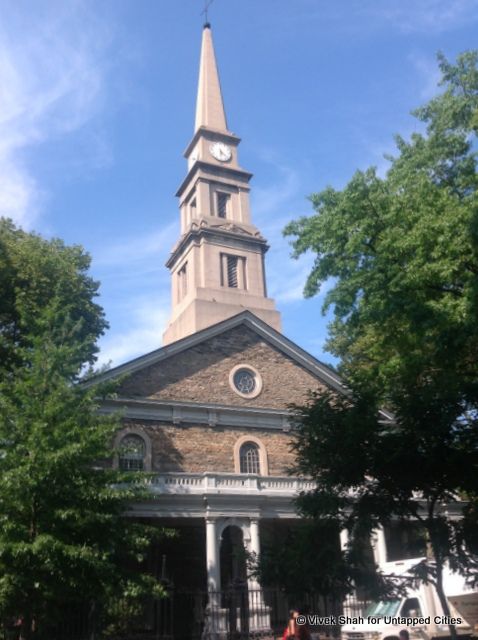
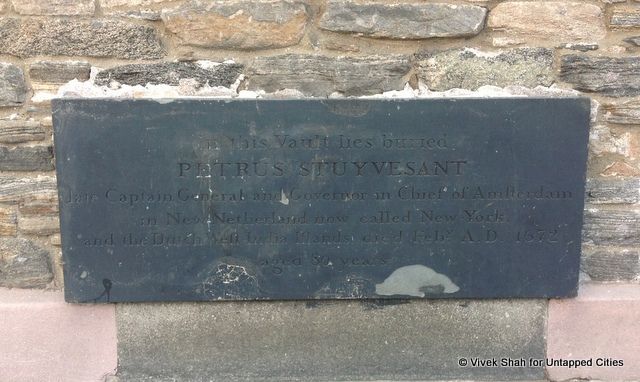
Petrus III also built a house on the Street in 1803 as a wedding gift to his daughter, Elizabeth. She married Nicholas Fish, an American Revolutionary soldier and close friend of Founding Father, Alexander Hamilton. The house is now known as the Stuyvesant-Fish House.
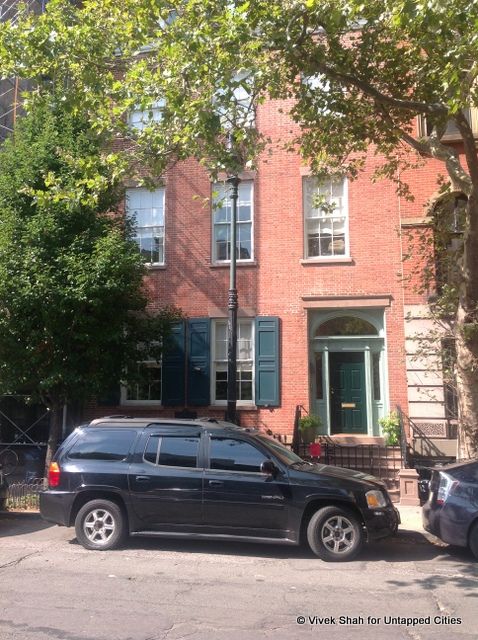
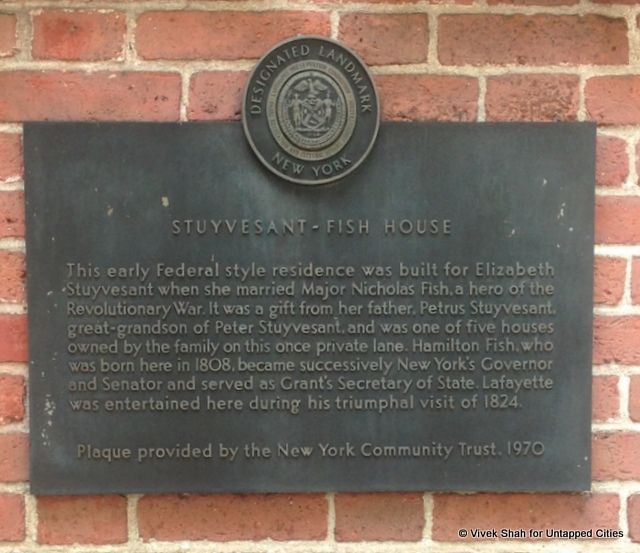
It’s diagonal day here, we’ve also written about the mosque that’s oriented towards Mecca, 29 degrees off from the Manhattan grid. For more information on the area, check out our articles on the Bowery and St.Mark’s-In-The-Bowery.
Subscribe to our newsletter